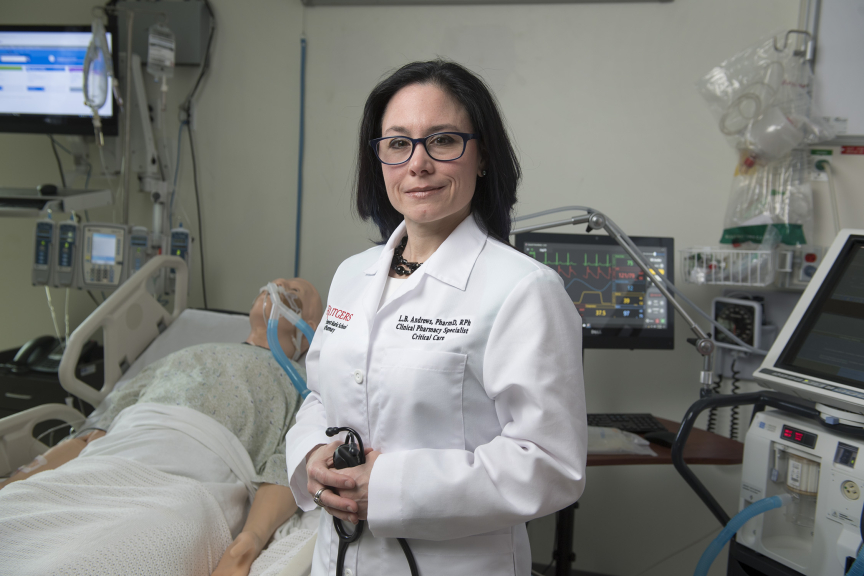Rutgers-Developed Model for ICU Pharmacists Addresses Common Dilemma for Hospitals
The new model improved the overall quality of pharmacy services provided to patients

A new team-based model for intensive care unit (ICU) pharmacists, developed by Rutgers and RWJBarnabas Health System, resolves a common dilemma for hospitals and improves care for critically ill patients.
Many ICUs include a team of general practice pharmacists, supplemented by one who specializes in critical care. Typically, only the specialist can respond to such complex, ICU-specific issues as determining whether a delirious patient needs to switch medications. But when the specialist is not on duty, patients often have to wait longer for that expert care, according to the study published in the Journal of Clinical Outcomes Management.
Lead researcher Liza Barbarello Andrews, a clinical associate professor at Rutgers University’s Ernest Mario School of Pharmacy, developed a solution at Robert Wood Johnson University Hospital Hamilton, where she is the sole critical care pharmacy specialist.
Under her new model, several non-specialists on the Hamilton ICU’s pharmacy staff underwent six months of intensive classroom and clinical training on topics such as the complications that patients face while attached to mechanical ventilators; infectious disease risk; and blood flow management for non-mobile patients. Over time, all pharmacists on the newly formed Critical Care Pharmacist Team (CCPT) were able to provide the full range of patient interventions previously limited to the critical care specialist.
The new model, believed to be the first of its kind, produced notable results: The overall quality of pharmacy services provided to patients improved. All pharmacists who underwent the training reported feeling comfortable and confident in providing the specialized levels of care, along with a greater sense of professional satisfaction. Other members of the ICU staff, including physicians and nurses, also reported improvements in pharmacy care, including a consistent, high level of care even when the specialist was not on duty.
“Before we tried this model, the non-specialty pharmacists in the ICU were often uncomfortable with clinical issues, which sometimes meant going to the bedside to assess the situation. As a result, relatively minor issues were frequently escalated with a call to the specialist, who was not always readily available,” Andrews said. “Our new model effectively empowers all of our pharmacists to act as specialists.”
Andrews said the new model was adopted without significant cost and should therefore benefit other community-based hospitals with limited resources.
Researchers at Robert Wood Johnson University Hospital Hamilton also participated in the study.